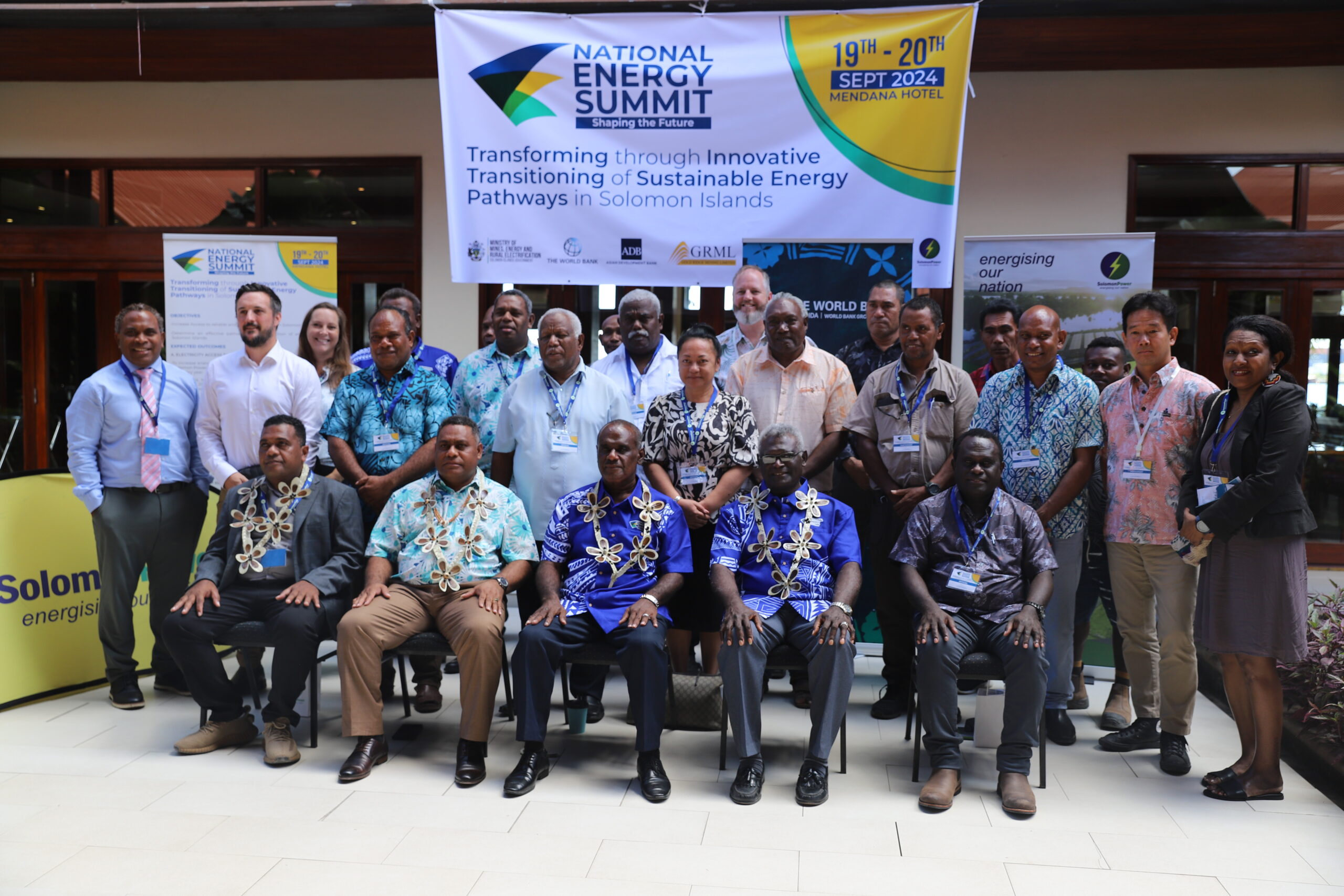
The Solomon Islands Government is aiming for a 50% increase in electricity grid connectivity for urban households and a 25% increase for rural households by 2030.
Prime Minister Jeremiah Manele announced the commitment during the official opening of a two-day Energy Summit in Honiara yesterday.
He said the two-day summit’s expected outcome is that it targets a 40% increase in off-grid solar and hydropower connections for both urban and rural households by 2030.
“We plan to reduce electricity and petroleum costs by implementing measures to reduce fuel costs by 7.5% annually and reduce electricity tariffs by 25% annually over the next three years.”
Electricity costs in the Solomon Islands are the highest in the Pacific and among the highest in the world, with an average retail electricity tariff of US$0.8 per kilowatt-hour (kWh),48 more than twice the regional average of US$0.29 per kWh, according to the World Bank.

Solomon Islands Stakeholders and Development Partners during the summit.
“The high reliance on imported fossil fuels for diesel generators, low renewable energy penetration, excess capacity of diesel plants, low production efficiency, and the lack of an independent regulator all contribute to high electricity tariffs,” the World Bank says in its latest Economic Report on Solomon Islands released this week.
“Furthermore, unplanned outages are concerning (as they affect business investment decisions and operations),” the report stated.
“These outages are caused by a number of factors, including natural disasters, adverse climatic conditions, and an inefficient maintenance regime.”
Prime Minister Manele said his government aims to establish an Independent Energy Commission by 2030 and “remove punitive measures from current legislation to attract renewable energy investment”.
“The government’s commitment is to shape a future with energy security, economic prosperity, and environmental sustainability,” he added.
The Prime Minister called for innovation in technology, policy, financing, and partnerships to harness renewable energy sources like solar, wind, hydropower, and biomass.
Meanwhile, Acting Minister for Mines, Energy, and Rural Electrification Rexon Ramofafia said that one key government goal is to focus on Green energy, starting with the Tina Hydropower Plant project.
“Sustainable energy security as a pillar of national development and economic growth,” Ramofafia said.
“Sustainable energy practices that avoid greenhouse gas emissions, and support climate change adaptation is our commitment,” he added.
The World Bank report has pointed out that potential exists for solar resource generation as well as hydro, which can be exploited further to reduce the cost of power generation.
It says the Solomon Islands Government maintains a database of over 100 potential hydropower sites with over 300 MW of generation potential, yet only a handful are close to load centers.
“Wind power could also be viable in Solomon Islands, but further technical assessment and country-wide mapping are needed.
“Solar is a proven renewable energy resource in Solomon Islands, but large-scale solar power requires appropriate and sufficient land, that is 1 MW of ground mounted solar requires in the order of one hectare of land.
The Energy summit concludes today.




















